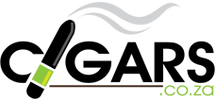There are no products listed under this category.
Padron
Demaso Padrón, Jose Orlando Padrón's grandfather, immigrated to Cuba from the Canary Islands (Spain) in the middle 1800s when he was a young boy. As was designated in those days, the "isleños" (English: islanders) were made to work in the tobacco fields. With what little money they had, the Padrón family bought a small farm in the Pinar del Río region of Cuba, Las Obas. At that time they made $7 every 100 pounds (45 kg) of tobacco they cultivated in Cuba. From there, the Padrón family continued to buy farms around the Pinar del Río region including a factory in Piloto, where the name of Jose's company, Piloto Cigars, is derived.
Jose Orlando Padrón was born in 1926 in Cuba and grew up near the Pinar del Río region, famed for its tobacco. His family has been working in the tobacco industry since the 1850s, and, when Jose moved from Cuba in 1961 after his tobacco farm was nationalized by Fidel Castro, went to Spain, then New York, and then he brought over a century's worth of tobacco knowledge to Miami. In Miami, Jose earned $60 every month from government aid to Cuban refugees. After a friend gave him a small hammer, Jose obtained a carpentry job. It was this job that enabled him to raise the $600 to start his own cigar brand and business. To this day, the little hammer has been a symbol of Jose's start as a cigar blender and manufacturer.
Padrón produced 200 cigars a day, made in typical Cuban rolling style, with one torcedor. Padrón then came to the idea of making a new cigar, the "Fuma". Made completely from Connecticut broadleaf tobacco, many bought this cigar for its curly head cap, which resembled the traditional cigars from Cuba.
It soon became very limiting to deal only with Connecticut broadleaf tobacco because of its long curing process. Padrón was approached by a man from a tobacco company in Nicaragua touring around for potential buyers, who asked him to inspect his tobacco for its quality. Padrón thought very well of his tobacco and told him to come back after his trip to Europe so he may travel to Nicaragua and inspect the tobacco and the fields. There, in the Jalapa valley of Nicaragua, Padrón found the tobacco he would use for his cigars.
Move to Nicaragua
Jose Padrón began using the Nicaraguan tobacco in 1967, but due to inability to meet the demands of his consumers, he moved his company to Estelí, Nicaragua in 1970 — a country with numerous political troubles at the time. Padrón tried to remain apolitical during his stay in Nicaragua however, after riots broke out and Padrón's factory was burnt down, Jose began to search for another location for his business.
While the factory in Nicaragua was rebuilt soon after the disaster, another factory was established across the border in Honduras. After the Sandinista rebellion and take over, there was much uncertainty at the Padrón factory as to what the workers were to do. Padrón asked them to continue working, and eventually Padrón returned to Nicaragua where he spoke to a Sandinista official, who promised him there would be no more problems with his factory.
Nicaraguan blockade
A new problem arose for Padrón after making peace with the Sandinistas: the United States embargo against Nicaragua enacted by President Reagan on Nicaraguan products. Padrón scrambled to move as much tobacco and cigars from Nicaragua to Tampa, Florida during the 5 days allotted before the blockade took effect. He was later granted an extension by the U.S. government to continue to move his product for another 6 months, then, whatever stock he had left in Nicaragua, remained there. After the blockade lifted, Padrón shifted his main operation back to Nicaragua, where it still remains today.
Current history
Now, both Jose Orlando Padrón and his son, Jorge "George" Padrón, run the family business. As President, Jorge is moving into the director's position for the company; making more trips to visit the factories in Estelí and working on the business end of the company. It is the intent of the Padrón family that Jorge will eventually take the main leadership role in the company one day.
In 2003, the company opened a new 12,000-square-foot (1,100 m2) rolling facility in Estelí, Nicaragua, a building twice the size of the company's previous Estelí facility. The new rolling center was the 17th building owned by Padrón in Estelí and brought the company's usable space in the city up to a total of 75,000 square feet (7,000 m2), mostly dedicated to the storage of tobacco. At that time the company maintained an inventory sufficient for more than 25 million cigars — six years' worth of production.
